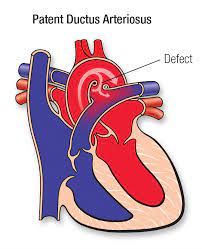What is the advantage of teaching to the family about continuous cycling peritoneal dialysis (CCPD) or continuous ambulatory peritoneal (CAPD) for adolescents who require dialysis?
Hospitalization is only required several nights per week
Adolescents can carry out procedures themselves
Dietary restrictions are no longer necessary
Insertion of a catheter does not require surgical placement
The Correct Answer is B
One of the advantages of CCPD and CAPD is that they allow for more flexibility and independence in performing peritoneal dialysis treatments, especially for older children and adolescents. With proper training and supervision, adolescents can learn to carry out many aspects of the dialysis procedure themselves, which can provide them with a greater sense of control and autonomy over their healthcare.
The other options are not accurate advantages of CCPD or CAPD:
A. Hospitalization is only required several nights per week: CCPD and CAPD are typically performed at home, and hospitalization is not required for routine treatments. However, regular clinic visits and follow-ups are still necessary.
C. Dietary restrictions are no longer necessary: Dietary restrictions may still be necessary for patients on peritoneal dialysis to manage their fluid and electrolyte balance. The extent of dietary restrictions can vary depending on the individual patient's needs.
D. Insertion of a catheter does not require surgical placement: The insertion of a peritoneal dialysis catheter does require a surgical procedure. The advantage of CCPD and CAPD is more related to the flexibility and independence of performing dialysis at home rather than the method of catheter insertion.
Nursing Test Bank
Naxlex Comprehensive Predictor Exams
Related Questions
Correct Answer is A
Explanation
PDA is a congenital heart defect where a blood vessel called the ductus arteriosus, which is supposed to close shortly after birth, remains open. This allows oxygenated blood from the aorta to flow back into the pulmonary artery, leading to increased pulmonary blood flow and congestion. Over time, this can lead to increased pulmonary vascular congestion and potentially cause complications such as pulmonary hypertension and heart failure.
Surgical repair of PDA, often through a procedure known as ligation or closure of the ductus arteriosus, is performed to stop this abnormal blood flow and prevent the associated complications, particularly the increase in pulmonary vascular congestion.
The other options (B, C, and D) are not the primary complications associated with PDA and surgical repair is not performed primarily to address these issues:
B. Decreased workload on the left side of the heart is not a primary reason for surgical repair of PDA, although it can be a potential benefit of closing the ductus arteriosus.
C. Pulmonary infection is not a direct complication of PDA, but the increased pulmonary blood flow associated with a large PDA can make the lungs more susceptible to respiratory infections.
D. Right-to-left shunt of blood is not a typical complication of PDA. PDA typically involves left-to-right shunting of blood, with oxygenated blood flowing back into the pulmonary circulation, leading to complications related to increased pulmonary blood flow.

Correct Answer is B
Explanation
Creatinine is a waste product generated by muscle metabolism and excreted by the kidneys. It is commonly used as a marker of renal function because it is filtered by the glomeruli and almost entirely excreted in the urine. When there is a reduction in GFR, as in acute renal failure, creatinine levels in the blood tend to rise. Elevated serum creatinine levels are indicative of impaired kidney function and a decreased GFR.
The other options are not direct indicators of GFR:
A. Protein level: While proteinuria (elevated protein levels in urine) can be a sign of kidney dysfunction, it is not a direct measurement of GFR. Proteinuria can occur for various reasons, including glomerular damage, but it doesn't provide a precise assessment of GFR.
C. Osmolality: Urine osmolality reflects the concentration of solutes in urine but is not a direct measure of GFR. It can provide information about the concentrating ability of the kidneys, but it doesn't assess the overall filtration rate.
D. pH: Urine pH is a measure of the acidity or alkalinity of urine and is not a direct indicator of GFR. It can be influenced by factors such as diet and renal tubular function but does not directly measure the filtration rate of the glomeruli.
Whether you are a student looking to ace your exams or a practicing nurse seeking to enhance your expertise , our nursing education contents will empower you with the confidence and competence to make a difference in the lives of patients and become a respected leader in the healthcare field.
Visit Naxlex, invest in your future and unlock endless possibilities with our unparalleled nursing education contents today
Report Wrong Answer on the Current Question
Do you disagree with the answer? If yes, what is your expected answer? Explain.
Kindly be descriptive with the issue you are facing.
